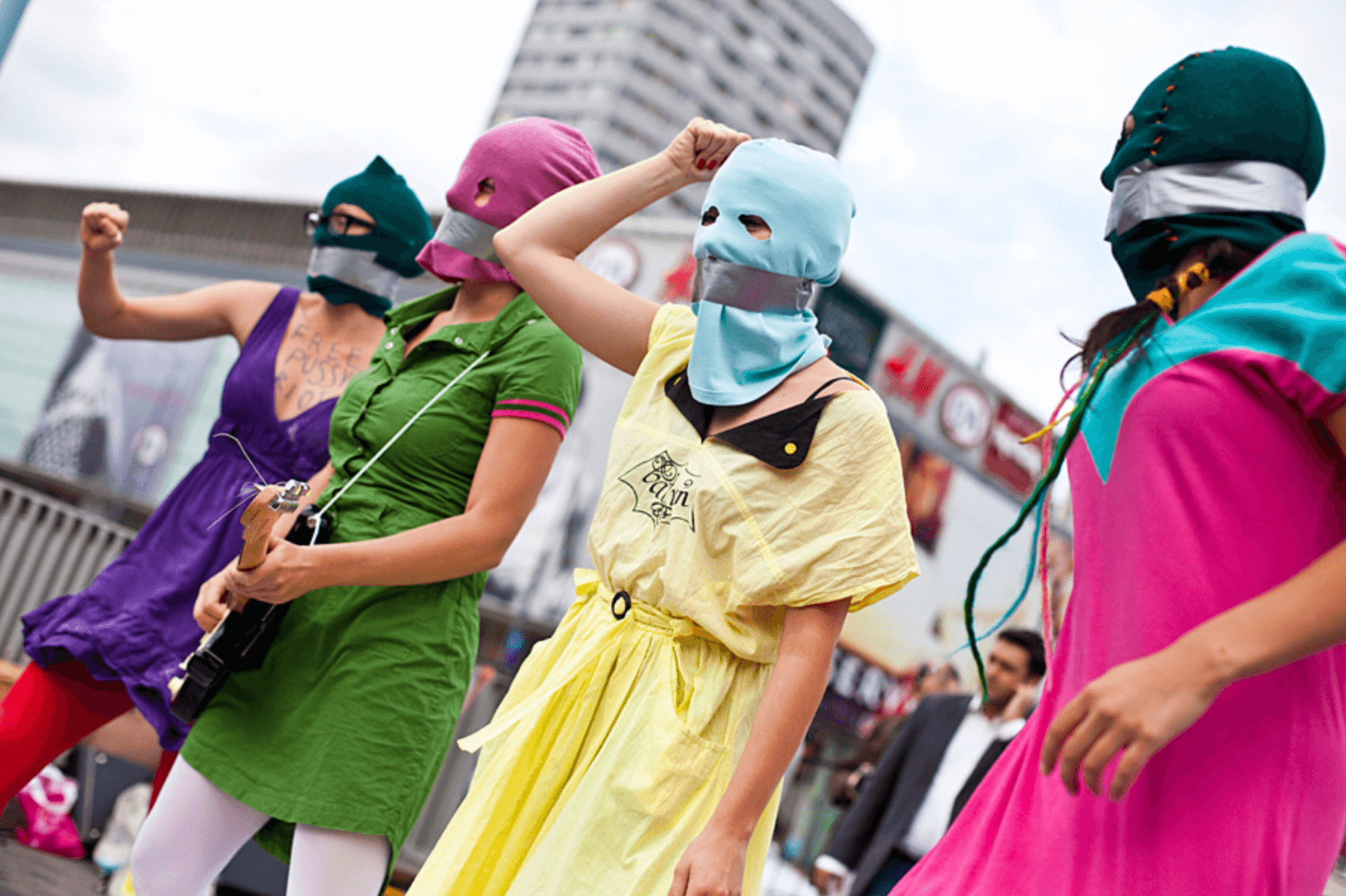Political involvement of the body
The square next to Warsaw’s Centrum metro station is something of a contemporary agora – the sale of flowers, balloons and second-hand books meets social engagement, such as collecting signatures for petitions or voicing one’s position on an issue through a microphone. This place, the so-called ‘Patelnia’, was also chosen by the artists of TERAZ POLIŻ to be the space for a happening in defence of the members of the feminist collective Pussy Riot, who were arrested after an anti-Putin protest in one of Moscow’s cathedrals. The musical happening at Patelnia was combined with a joint march towards the Russian embassy, where a petition for the release of Pussy Riot was to be submitted. Reviewing the photographic documentation of this event evokes emotions such as anger and tension of a mobilised body.

Feminist artivism that uses artistic means to engage in socio-political issues is not a homogeneous category, but one example of such activities is the bodily intervention that ‘infects’ the urban infrastructure. Members of TERAZ POLIŻ wore colourful balaclavas and dresses – outfits that mimicked Pussy Riot’s signature image – and with their performance triggered what Randy Martin, an academic lecturer, dancer and activist, has called ‘social kinaesthetic’, a collectively shared ‘disposition to gather, adhere, pass, line up and move’.
The body then becomes a medium of resistance, taking a stand against the city’s dynamics, often disrupting its everyday functioning; it inspires other bodies to join in, to activate the potential that lies in a simultaneous physical presence in a certain place. Revealing one’s own vulnerability to injury through placing protesting bodies in a public space and efficient mimicry (adopting the emblems of Pussy Riot) is also a form of performatively expressed solidarity with other feminist artists.

